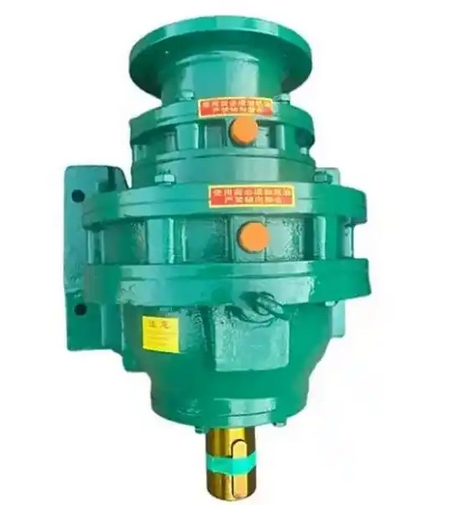How to determine the fault type of WPW40-25 worm gear reducer based on its vibration state
Based on the vibration state of WPW40-25 worm gear reducer, it is necessary to comprehensively analyze the fault type by combining the vibration characteristics and related parameters. The specific method is as follows:1、 Basic vibration parameter detection
1. Vibration amplitude measurement
Use a vibration tester to detect displacement, velocity, or acceleration. The normal vibration velocity should be ≤ 1.6mm/s (in good condition) to ≤ 2.8mm/s (within the acceptable range). If it exceeds 4.5mm/s, there may be a serious malfunction.
2. Vibration frequency analysis
1x dominant: commonly seen in rotor imbalance or abnormal worm gear meshing.
2nd harmonic (2X) protrusion: may be due to parallel misalignment or gear eccentricity.

High frequency harmonics: If there is meshing frequency modulation (such as worm gear shaft rotation frequency modulation), it indicates a tooth profile change fault.
2、 Typical fault characteristics and corresponding vibration performance
Changes in tooth profile of worm gear and worm gear
Vibration characteristics: A non-stationary signal with meshing frequency as the carrier and worm gear shaft rotation frequency as the modulation frequency. The initial impact energy is small, and in severe cases, the vibration amplitude suddenly changes.
Auxiliary judgment: Combine whether the oil temperature has abnormally increased (>70 ℃) and whether there is periodic abnormal noise.
Unbalanced rotor
Vibration characteristics: Radial vibration is dominant, 1X frequency is dominant, waveform is sinusoidal, and axis trajectory is elliptical.
Correlation phenomenon: The amplitude of vibration varies with the square of the rotational speed, while the phase remains stable.
Bearing malfunction
Vibration characteristics: High frequency impact signals (such as the natural frequency of bearings) accompanied by an increase in axial vibration.
Auxiliary judgment: When the temperature of the bearing seat is more than 15 ℃ higher than that of the box, the bearing clearance needs to be checked.
Mechanical looseness
Vibration characteristics: Unstable vibration amplitude, phase difference of 180 ° (such as loose feet), possibly accompanied by 2X frequency.
Related phenomenon: Sudden changes or slow attenuation of vibration after shutdown.


